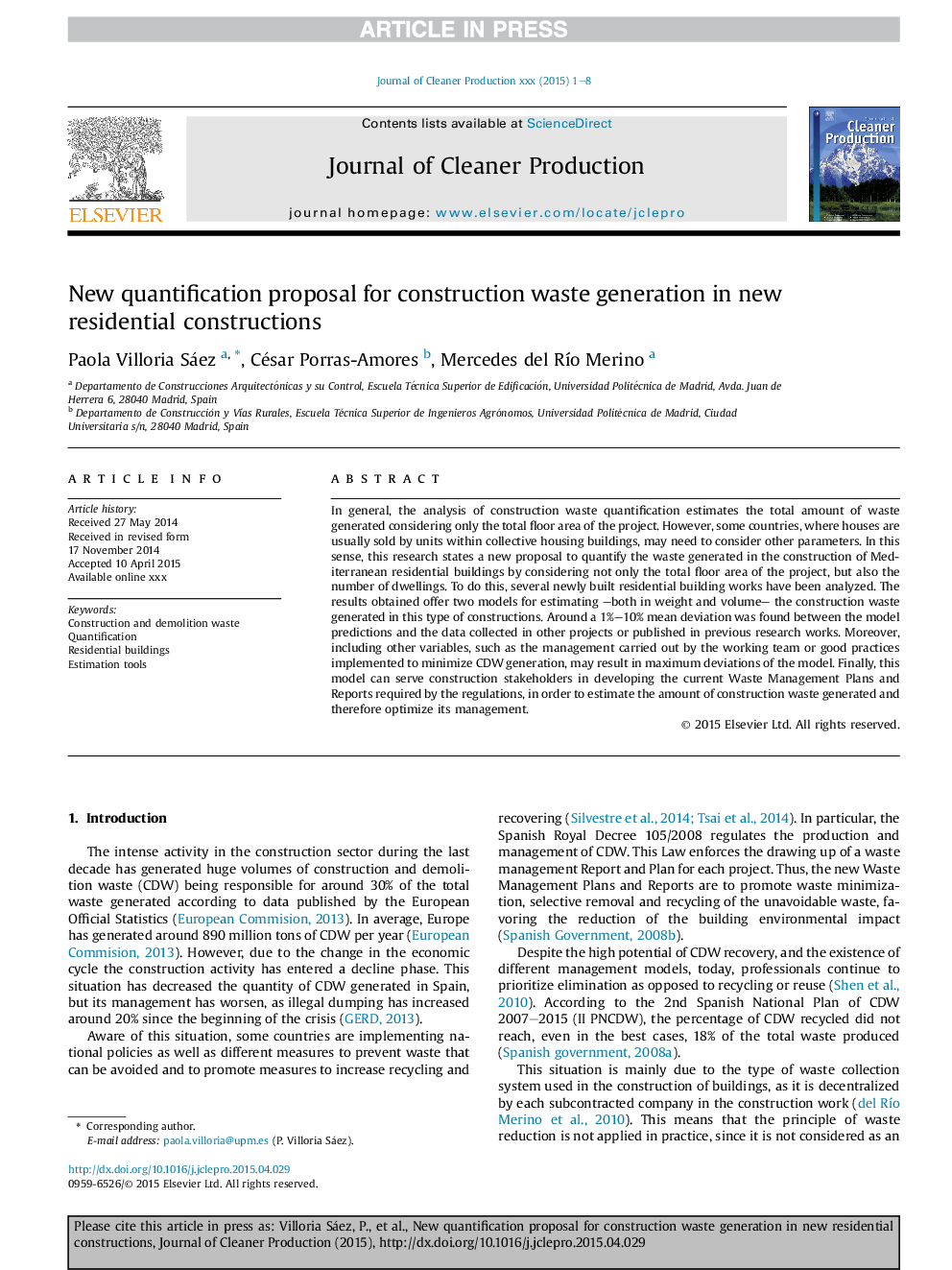| Article ID | Journal | Published Year | Pages | File Type |
|---|---|---|---|---|
| 8103755 | Journal of Cleaner Production | 2015 | 8 Pages |
Abstract
In general, the analysis of construction waste quantification estimates the total amount of waste generated considering only the total floor area of the project. However, some countries, where houses are usually sold by units within collective housing buildings, may need to consider other parameters. In this sense, this research states a new proposal to quantify the waste generated in the construction of Mediterranean residential buildings by considering not only the total floor area of the project, but also the number of dwellings. To do this, several newly built residential building works have been analyzed. The results obtained offer two models for estimating -both in weight and volume- the construction waste generated in this type of constructions. Around a 1%-10% mean deviation was found between the model predictions and the data collected in other projects or published in previous research works. Moreover, including other variables, such as the management carried out by the working team or good practices implemented to minimize CDW generation, may result in maximum deviations of the model. Finally, this model can serve construction stakeholders in developing the current Waste Management Plans and Reports required by the regulations, in order to estimate the amount of construction waste generated and therefore optimize its management.
Related Topics
Physical Sciences and Engineering
Energy
Renewable Energy, Sustainability and the Environment
Authors
Paola Villoria Sáez, César Porras-Amores, Mercedes del RÃo Merino,
